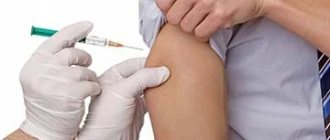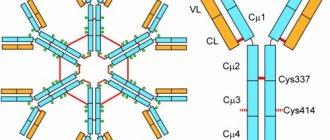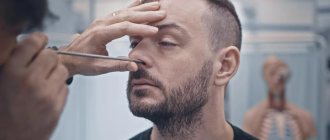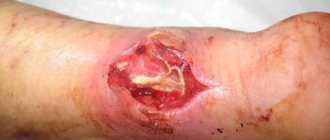home
/
Articles
/
How to get rid of needle bumps
Back in the third century BC, Hippocrates considered the use of injections an important component of therapeutic measures aimed at treating various types of ailments. At that time, he used a pig's bladder in tandem with a hollow reed tube for injections. Despite this, the syringe in its usual form was invented only in the mid-nineteenth century. Then they began to use reusable variations with a steel piston and a removable needle. Today, injections are given mainly with disposable sterile varieties, which is more justified from a safety standpoint.
Modern doctors readily prescribe intramuscular injections, rightly considering them one of the most effective and safe forms of delivering medications to the body. Despite all the advantages, this method is not ideal due to the presence of a number of side effects. One of the most common is bumps that form on the skin after injections. This article will discuss the nature of such phenomena, the potential danger they pose to the patient’s health, methods of combating them, and preventive measures for the appearance of tumors.
Distinctive features of injections
Standard medical protocols involve the use of intramuscular injections. Today, with their help, doctors can treat most various types of ailments without resorting to prescribing oral medications. Doctors prefer this method of therapy for several reasons:
- Possibility of targeted delivery of drugs. This is important in neurology, surgery, dentistry, anesthesiology and other areas of medicine that require local exposure to medications during treatment.
- No irritation of mucous membranes. Some tablet antibiotics, muscle relaxants and a number of other groups of drugs irritate the mucous membranes of the gastrointestinal tract
- Speed of action of the drug. The same drug, administered as an injection and orally, begins to act at different intervals. Injections go directly into the blood, so they work much faster, this is especially important in the context of painkillers and antipyretics, antispasmodics
The relative disadvantages of using injections are much smaller. The main thing is the need for special knowledge and skills in the person doing the injection. Anyone can take the pill after a doctor’s prescription.
Causes of bumps
In the medical literature, such phenomena are called infiltrates. They are a collection of blood and lymph cells under the skin. Such seals cause their owner a lot of trouble, causing pain and acting as a catalyst for destructive processes. Lumps can appear for several reasons:
- There was trauma to the vessel. In this case, the compaction is usually accompanied by bruising
- The injection was given in the wrong place. Not every place is suitable for injection. The optimal areas are the buttocks, located in the extreme upper quarters, deltoids and quadriceps.
- Failure to comply with technology. The administration of injections should be carried out in accordance with the recommendations of the Ministry of Health and SanPin. They prescribe the puncture at a right angle
- The rate of drug administration or the force of pressure on the piston was exceeded. The medicine should be administered gradually
- During the injection, a nerve ending was damaged. Experienced specialists know the locations of large nerve nodes and try to avoid them
- The length and diameter of the needle were chosen incorrectly. The larger the syringe, the more it injures the tissue during the injection.
- Insufficient disinfection of tissues or its complete absence. In this case, the bumps appear due to infection, which may be more difficult to cure than the original disease.
- Specificity of the administered drug. Some medications can cause bumps due to the fact that they constrict blood vessels and muscle fibers
Causes of arm pain after the coronavirus vaccine
There are only three officially registered Covid-19 vaccines in Russia: Sputnik V, EpiVacCorona and CoviVac. Like any vaccine, they cause side effects once they are injected into the body, including soreness in the arm.
Many people feel pain “inside” the arm, i.e. in the muscle layer, others feel pain in the skin in the area of the injection, and sometimes the injection can even cause numbness. This reaction is caused by a large dose of the drug injected directly into the muscle itself, which causes pain. After administration of the drug, time is needed for its distribution throughout the body and absorption. Buffer solutions in the drug try to keep it longer at the injection site and slow down its spread throughout the body. As a result, they remain concentrated in high concentrations at the injection site for some time. During this time, the cells of our body, which are responsible for immunity, “meet and get acquainted” with the vaccine. The presence of such pain at the injection site indicates that the human immune system is excited and is actively producing cells to suppress the virus.
If after vaccination you do not feel pain at the injection site, then do not worry, this does not affect the strengthening of the immune system. In other cases, pain, inflammation or bruising in the injection area is normal.
In addition, during vaccination, nerve endings may be affected, which causes pain. Also, the injection site may hurt if a technical error was made during vaccination.
In most patients, side symptoms disappear after a few days, and pain in the arm can last up to a week. If there is no improvement in your condition and well-being, you should immediately contact a specialist.
The impact of infiltration on health and well-being
Some people tolerate them without any complications or discomfort, waiting until the lumps begin to resolve naturally, but in most patients the appearance of lumps is accompanied by the following symptoms:
- Pain syndrome that has a pressing, pulling or cutting nature. The pain can be quite severe
- Bruising, hematomas. Occurs if blood vessels are injured during the injection process
- Suppuration. May develop if an infection gets into the blood or tissue after the injection
- A noticeable increase in body temperature, chills, fever. May indicate inflammatory processes in the body
- Itching, burning, redness at the injection site. Such manifestations often occur due to the appearance of allergic reactions to the drug administered during the injection.
If you notice such symptoms, you should seek qualified help from specialists; they will prescribe adequate treatment and help you quickly get rid of negative side effects in the form of painful growths and bruises.
How to treat an abscess
The abscess is removed by a surgeon. If you do not seek medical help in a timely manner, this can lead to even more serious consequences for the patient.
- If the inflammatory process is infiltrative and non-purulent, conservative treatment is used. Physiotherapy, absorbable medications, and warm compresses are prescribed. It is recommended to lubricate the injection site with an alcohol solution of iodine.
- If pus begins to form at the site of inflammation, the doctor at our clinic will perform a puncture, remove the accumulated pus and rinse the cavity.
- If the abscess is deep, surgical treatment is performed. An incision is made at the site of the abscess, the cavity is washed and drained.
- In case of an extensive process and symptoms of general intoxication, treatment with antibiotics, immunomodulators, and vitamins is prescribed.
Qualified specialists at our clinic treat purulent inflammatory diseases using the most effective and safe methods and medications.
Diagnostic methods in surgery:
- Doppler in surgery
- Colonoscopy
- Angiography
- CT scan
- Gastroscopy
- MRI
- Abdominal ultrasound
- X-ray
- Endoscopy
Prices:
| Code | Name of service | Prices |
| 1 | Initial appointment | 1200 |
| 2 | Repeated appointment | 900 |
| 3 | Calling a surgeon to your home | 3500 |
| 4 | Abdominal ultrasound | 2200 |
| 5 | Ultrasound of veins and vessels | 2400 |
| 6 | Doppler 2-3 trimester | 1200 |
| 7 | Rectoscopy | 1500 |
Conservative treatment
Modern medicine has a wide range of methods and means that can quickly remove the negative consequences of incorrectly or unprofessionally given injections. Here are the most effective:
- External mesh. Apply to the buttocks or other areas of the body where injections were made using a cotton swab, previously soaked in iodine, several times a day. Lines are drawn arbitrarily, their thickness and frequency are not regulated
- Use of gels, ointments, creams and other specialized products. Their task is to quickly resolve the lump by increasing blood and lymph flow to the injection site
- Compresses. The cones are perfectly absorbed under the influence of dioxidin or demixide, which is used to moisten gauze or cotton swabs applied to the seals. Sometimes doctors consider it justified to use pure medical alcohol for the same purpose.
- Lotions. A solution of magnesia (magnesium sulfate), which is applied to them several times a day, has proven itself well.
- Physiotherapy. Treatment in this way involves high-frequency therapy (including ultrasound), infrared photocoagulation
- Massage. The bumps dissolve quite quickly if you act on them in a certain way in the direction of the muscle fibers
- Warming up. In medical practice, the removal of seals is carried out using a blue lamp, heating sessions of which are carried out two to three times a day
Observation after vaccination
If the lump is small and lasts no longer than 3-5 days, there is nothing to worry about. Many mothers begin to worry when the lump grows or when it does not go away for a long time. But here, first of all, you need to look at the child’s well-being: if there are no noticeable problems, then you should not panic, even if the lump does not resolve for a couple of weeks.
To know exactly what reactions are possible after vaccination, carefully read the instructions for the vaccine. We advise you to follow the following rules after vaccination:
- Do not wet or heat the injection site, it should be dry. Wear clothing to prevent the injection site from sweating.
- When you wash, do not rub the injection site with a washcloth; it is better if soap does not get on it.
- Do not treat the wound with anything, including ointments (for example, Vishnevsky), creams, brilliant green and iodine: by your actions you can turn the body’s normal reaction to a vaccine into an abscess.
- Do not rub or comb the wound, do not crush or put pressure on it, and do not let your child do this.
- You should dress in loose clothing so that the injection site does not rub against the fabric. It is better to choose clothes made from natural fabrics, as synthetics can cause an allergic reaction.
How to relieve the condition
Since the lump is a common local reaction to the vaccine, we strongly advise you not to panic and avoid self-medication: after 3-5 the lump will resolve itself, and the wrong medications can only worsen your health. If your child tries to scratch the injection site, you can cover it with a light gauze bandage.
Traditional methods
Healers and healers suggest getting rid of seals using the following means:
- Compresses. Cabbage juice is one of the most effective in this regard. It can be used to treat tumors of almost any size. Bodyaga, a mixture of vinegar and raw eggs, and laundry soap are effective.
- Apitherapy. The cones dissolve quite quickly under the influence of honey and propolis tincture, which are applied to the seals several times a day. With the help of these remedies you can get rid of old tumors
- Applying leaves of plants, vegetables and fruits. Apply raw potatoes, aloe leaves, white cabbage (they should be pierced first), banana peels, cranberry leaves
It is optimal to carry out treatment with folk remedies in combination with conservative therapy. This way you can achieve the best effect in the shortest possible time.
When to see a doctor
If you find a lump at the puncture site, this does not mean that you need to immediately run to the doctor. If the following symptoms occur, you should not delay going to the doctor:
- Does not disappear for a long time. You should be concerned if the infiltration does not go away for more than a month
- Suppuration appeared in the area of the lump. In this case, after pressing, liquid will flow out of the puncture
- The appearance of pain on palpation. A particularly alarming symptom in the context of the presence of lumps is a burning sensation.
- General deterioration in health after the patient received the injection. It should be alarming if the condition is accompanied by an increase in temperature, chills and increased swelling
If such symptoms appear, you should not self-medicate. It is much more advisable to seek help from experienced specialists. In such a situation, delays are unacceptable, since bumps are a harbinger of dangerous complications that can cause serious harm to health.
Why are bumps after injections dangerous?
Doctors identify a number of complications, the timely and adequate treatment of which was not carried out. Here are the most dangerous:
- The appearance of abscesses. Such phenomena occur on the butt or in other areas in which bumps from injections were caused by infection
- Blood poisoning. If the injection was performed without disinfection, harmful agents could enter the bloodstream
- Allergic reactions. The appearance of bright red bumps after injections along with difficulty breathing, increased sweating and lacrimation indicates the presence of an allergy caused by the injection. In this case, compaction on the buttocks or in another area is a consequence of it
- Tissue death. Such cases are quite rare. They are the result of abscesses and suppurating seals in the buttocks, which the patient did not want to treat in time.
Reasons for the development of abscesses after an injection
Any intramuscular injection is an invasive procedure. Such an intervention violates the integrity of the skin and triggers a whole chain of pathological changes. As a rule, the cause of an abscess is incorrect administration of injections in violation of the rules of asepsis and antisepsis. Often such complications occur if the injection was given at home.
Predisposing factors for the development of an abscess are decreased immunity and a sharp weakening of the body.
The correct way to administer the injection is to insert a needle into the upper outer quadrant of the buttock. It is permissible to inject the medicine into the muscle layer of the shoulder or thigh. If the syringe needle enters a large blood vessel, hemorrhage occurs into the soft tissue, which can lead to the development of an abscess. A number of drugs can have an irritating effect on tissue; when administered not into the muscle, but into the subcutaneous fat, it can also lead to the formation of an abscess.
If the wound at the injection site was scratched, this could serve as an entry point for infection and cause a suppurative process.
What symptoms do you see a surgeon for:
- Presence of hernial protrusion
- Daggering pains in the abdomen
- Bloating
- Pain in the right hypochondrium
- Bitterness in the mouth
- Nausea
- Presence of neoplasms on the skin
- Swelling and redness of the skin
- Bone fractures and bruises
- Wounds of any location
- Vomit
- Enlarged and painful lymph nodes
Preventive measures
Putting the following recommendations into practice will help minimize the possibility of lumps appearing after intramuscular administration of the drug:
- Use of sterile syringes whose expiration dates are within acceptable limits
- Removing the needle after administering the drug should follow the same trajectory as the puncture
- Compliance with the rules of disinfection and asepsis
- Oil-based preparations should be heated to the required temperature
To avoid the risk of complications after injections, you should trust their implementation to qualified specialists who fully possess the relevant knowledge, practical skills and sufficient experience. In this case, the possibility of the appearance of neoplasms will be minimized.








